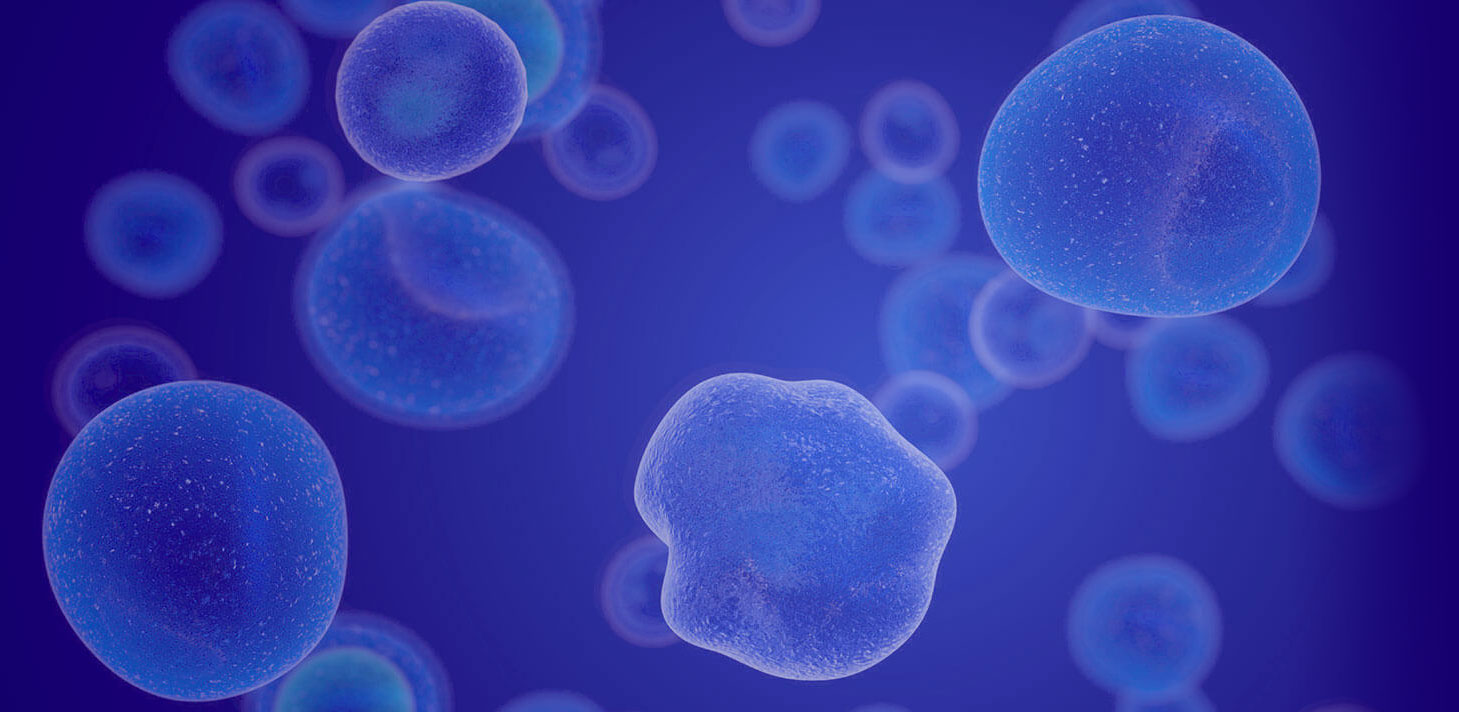Stem Cells for Peripheral Neuropathy
Conveniently located to serve the areas of Greenville, SC, Spartanburg, SC, Columbia, SC, Anderson, SC and Asheville, NC

Peripheral neuropathy is a condition whereby damaged nerve cells outside the brain and spinal cord cause abnormal pain, tingling, and numbness in a certain part of the body. This type of nerve pain is often a sign of another more serious condition like diabetes, an autoimmune disease, an infection or injury, or another inherited disorder.
With stem cell treatment, patients suffering from this condition can relieve their symptoms and return to the activities they love. These cells are responsible for differentiating into new tissues, helping regenerate damaged areas of the body. Though stem cells are found naturally within the body, when administered as injections, they can produce a boosted healing response and help produce healthier nerve cells for those with peripheral neuropathy.
If you are looking for a natural solution to this challenging condition, treatment at Daisy Stem Cell Therapy may be the best approach for your specific needs. At our practice, you can expect to undergo an overall health evaluation to help you find out if stem cells can help you revive normal nerve function in your affected area/s. Our facility is led by Dr. John C. Haasis III, an experienced specialist in the regenerative medicine field who will work with you to understand your individual needs.
We invite you to schedule your consultation by calling (864) 775-5682 or inquiring with our contact form, and a member of Dr. Haasis’ team will attend to you as soon as possible. We are located in the following areas:
- Anderson, SC
- Spartanburg, SC
- Greenville, SC
- Columbia, SC
- Asheville, NC
Contents
About Peripheral Neuropathy
Peripheral neuropathy is often a sign that another condition requires treatment. The affected nerves are not within the spinal cord and brain, but throughout the body and are responsible for sending sensory information to the brain. Usually, peripheral neuropathy begins in the hands or feet and develops slowly with mild symptoms. Symptoms can start as sensations of numbness or mild pain but may progress to muscle weakness, muscle cramps, and more intense, burning pain. While traumatic injury can cause instant peripheral neuropathy, some people may have nerve damage that progresses over several years- it varies widely. There are over 100 different types of peripheral neuropathy, but there are a few categories that physicians use to get a better understanding of the nature of every patient’s condition:
- Sensory neuropathy affects pain, temperature, and touch sensations.
- Motor neuropathy is characterized by an inability to move muscles properly.
- Autonomic nerve neuropathy is a serious, but rare issue in which the affected patient’s internal organs do not function correctly.
- Combination neuropathy means that the patient reports 2 or 3 of the symptoms related to motor, sensory, or autonomic nerve neuropathy types.
Peripheral Neuropathy & Diabetes
Diabetes is the most common cause of peripheral neuropathy. Studies show that somewhere between 50% to 66% of all people with diabetes will develop some form of peripheral neuropathy within their lifetime. Research cannot seem to pinpoint the exact cause since it varies due to lifestyle factors, overall health, fitness, and age, but in the context of diabetes, peripheral neuropathy is fairly well understood. Studies show that high blood sugar levels cause damage to small blood vessels, reducing quality nutrients and oxygen to the nerve cells. (1)
How Peripheral Neuropathy is Diagnosed
Peripheral neuropathy must be properly diagnosed before a patient begins to undergo a treatment protocol. There are several ways physicians confirm the exact location and severity of the nerve damage:
- Blood tests
- Muscle strength tests
- Sensory and movement tests
- CT scan
- MRI scan
- Electromyography (EMG), a test that measures electrical activity in the muscle in response to a stimulus
- Nerve or skin biopsy
- Nerve conduction tests
Some of the most common peripheral neuropathy conditions include carpal tunnel syndrome, sciatica, phantom limb pain, and neuralgia (electricity-like pain) after shingles.
How Stem Cells Benefit Nerve Health
Research suggests that around 20 to 25% of all patients with chronic pain experience it due to some form of neuropathic pain, suggesting that stem cells may be a viable treatment for these individuals. These cells have a vast array of neuroprotective qualities that can help support your body’s ability to recover from symptoms related to these conditions. Mesenchymal stem cells (MSCs), in particular, can differentiate into neurons and release immunomodulatory molecules- substances that regulate immune system functions to fight infection and inflammation.
MSCs can not only restore optimal function to neurons, but they can also promote angiogenesis– the formation of new blood vessels. (2) This can be a vital advantage for patients with diabetes whose vascularization is compromised, a leading factor in their neuropathic condition. Aside from replacing dysfunctional nerve cells, stem cell therapy can also cause an influx of trophic factors, molecules that promote neuronal protection and support regeneration. (3)
Personal Consultation

During your consultation with Dr. Haasis, he will review your symptoms and ask you about the treatments you have tried so far. He will ensure that you have a proper diagnosis for peripheral neuropathy so that he can address your issues properly. He will clarify what the stem cell treatment does and explain in more detail how it takes action within the body. After addressing any immediate concerns, you will have an opportunity to ask additional questions to further familiarize yourself with this innovative treatment. Dr. Haasis wants every one of his patients to feel educated and comfortable with their decisions.
To get started with a consultation at the Daisy Institute, call (864) 775-5682, request an appointment online, or visit in-person at one of our 5 office locations:
- Anderson, SC
- Spartanburg, SC
- Greenville, SC
- Columbia, SC
- Asheville, NC
How Stem Cell Treatment Works
At the Daisy Institute, we believe in the power of minimally invasive allograft stem cells– stem cells ethically harvested from other human donors. With this method, Dr. Haasis can avoid having to perform a surgical aspiration to collect stem cells from the pelvis, an uncomfortable operation that involves inserting a needle into the bone marrow. With allograft stem cells, you can still reap the benefits of regenerative medicine, and the sample will still be highly biocompatible and bioavailable. Dr. Haasis attains these high-quality stem cells from a reputable, federally-regulated bank that processes each sample with centrifugation. This purification method involves mechanically spinning the stem cells to isolate them from other unneeded tissues in the sample. (4)
Dr. Haasis will first use a local anesthetic in the affected area before administering injections of stem cells. As they enter in and around the damaged nerves, the cells will help promote myelin regeneration, the healing of the insulating layer around each nerve cell that helps conduct electrical pulses to the next cell. The stem cells can also reduce harmful inflammation, promote new blood vessel formation for better transportation of nutrients, and induce neurogenesis which is the formation of new neurons to replenish the system. (5)
Recovery and Results
After your treatment, you may experience some discomfort due to the injections themselves, but the effects should be mild and go away with over-the-counter remedies. Dr. Haasis will ask you to stop taking anti-inflammatories that could interfere with how the stem cells interact with your physiology. Over the following weeks, you should begin to notice a reduction in your nerve pain and notice improvements in your mobility. As the stem cells take effect, you may find it easier to perform physical therapy exercises that your primary care physician may recommend to mitigate your condition. Daily errands, working out, and work-related activities should become more manageable and enjoyable with significantly reduced pain levels. Though it will take a few weeks for physiological changes to fully settle in, you will benefit for several months following a single session of stem cell treatment.
Cost of Stem Cells in the Carolinas
The cost of your stem cell treatment for peripheral neuropathy will depend on the size of the affected area and whether you choose to undergo multiple treatment sessions. Dr. Haasis will be sure to give you an idea of the total cost during your consultation appointment, allowing you to make an informed decision for your health and well-being.
If you want to explore other pain-relieving options, browse through our website’s blog. To find out more about stem cells for nerve pain, call our main line at (864) 775-5682, get in touch with our online form, or visit one of our many locations throughout the Carolinas:
- Anderson, SC
- Spartanburg, SC
- Greenville, SC
- Columbia, SC
- Asheville, NC
FAQ
What is peripheral neuropathy?
Peripheral neuropathy is a broad term to describe weakness, numbness, pain, and other symptoms related to nerve damage. Peripheral neuropathy occurs in the nerve cells outside of the brain and spinal cord. It can be a sign of a more serious underlying condition, like diabetes, infections, an injury, or another genetic disorder that causes nerve pain.
What causes peripheral neuropathy?
Peripheral neuropathy can have various causes, including nerve damage, diabetes (diabetic neuropathy), chemotherapy (chemotherapy-induced neuropathy), carpal tunnel syndrome, and radiculopathy (a pinched spinal nerve). Identifying the underlying cause is crucial in determining the most appropriate treatment approach.
Is peripheral neuropathy reversible?
The extent to which peripheral neuropathy is reversible depends on the underlying cause and severity of the condition. Early intervention can often lead to significant improvement in symptoms, while more advanced cases may require ongoing management and symptom relief.
How can stem cells help control nerve pain?
Stem cells can help control nerve pain by increasing vascularization to the area to help heal it. They also cause neuron regeneration, protect the myelin sheath of nerve cells (facilitating better quality electrical nerve pulses), and decrease inflammation in the area.
References
- Bodman MA, Varacallo M. Diabetic Neuropathy. PubMed. Published September 4, 2023. https://www.ncbi.nlm.nih.gov/books/NBK442009/
- Vasanthan J, Gurusamy N, Rajasingh S, et al. Role of Human Mesenchymal Stem Cells in Regenerative Therapy. Cells. 2020;10(1):54. doi:https://doi.org/10.3390/cells10010054
- Padda J, Khalid K, Zubair U, et al. Stem Cell Therapy and Its Significance in Pain Management. Cureus. 2021;13(8):e17258. doi:https://doi.org/10.7759/cureus.17258
- Pelekanos RA, Sardesai VS, Futrega K, Lott WB, Kuhn M, Doran MR. Isolation and Expansion of Mesenchymal Stem/Stromal Cells Derived from Human Placenta Tissue. Journal of Visualized Experiments. 2016;(112). doi:https://doi.org/10.3791/54204
- Liu M, Li K, Wang Y, Zhao G, Jiang J. Stem Cells in the Treatment of Neuropathic Pain: Research Progress of Mechanism. Stem Cells International. 2020;2020:e8861251. doi:https://doi.org/10.1155/2020/8861251


